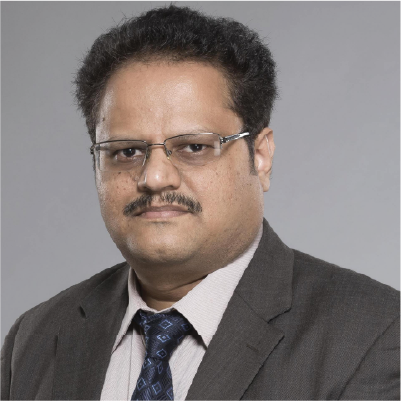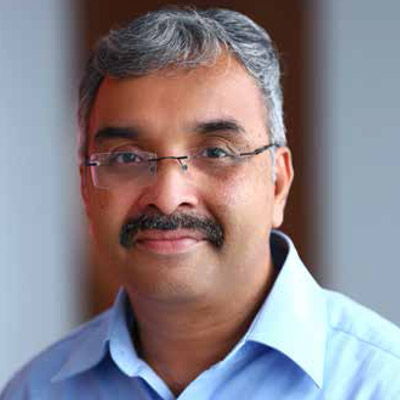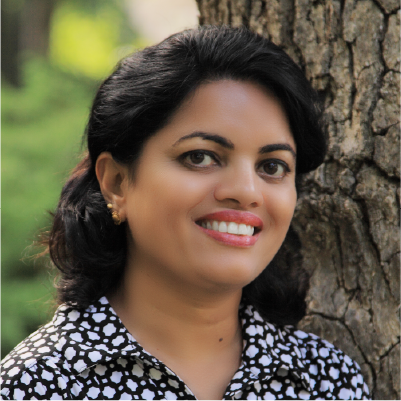AI for Autism
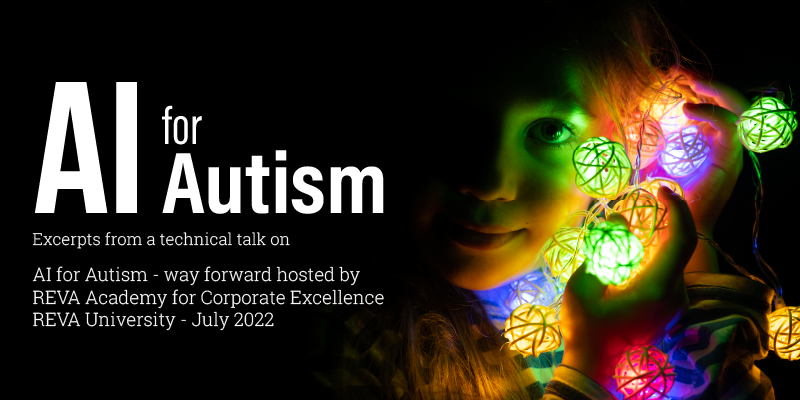
Click here to download the complete blog
Excerpts from a technical talk on AI for Autism – way Forward, hosted by REVA Academy for Corporate Excellence, REVA University, July 2022
Autism Spectrum Disorder – ASD and Current Status
Is autism an Epidemic?
Autism has been prevalent from time immemorial. Unfortunately, it is often labelled as a mental ailment in the earlier days. Autism (Autism Spectrum Disorder or ASD) is defined based on social and communication problems and repetitive and restrictive behaviours that can vary in individuals along a continuum of severity (Lord et al., 2018). Thanks to advanced research in the area, we now know that autism is a disorder of brain functioning which can be detected and can be managed to a great extent, especially if picked up very early.
The global map (Fig. 1.) from the Centre for Disease Control (CDC), United States projects that 1 child in 54 is affected by ASD almost making it sounds like an epidemic. About 2.2 million children aged 2-9 years may have Autism. Incidence of autism extrapolations for India is also alarming: 11,914 per year, 250 per month, 57 per week, 8 per day, and 1.4 per hour. The rate of incidence of autism is increasing by 10-17% per year as per one of the studies published by the Autism Society of America. Generally, it is found that 10 per cent of children have a neural disability. This can be physical or mental, social, or even emotional. In addition, there is a huge spectrum of those children who do not fit into this category of autism but will have certain features of autism. However, considering the poor practices of data collection, we may never know the accurate numbers in India. Refer Fig 2. for a few alarming Autism statistics.
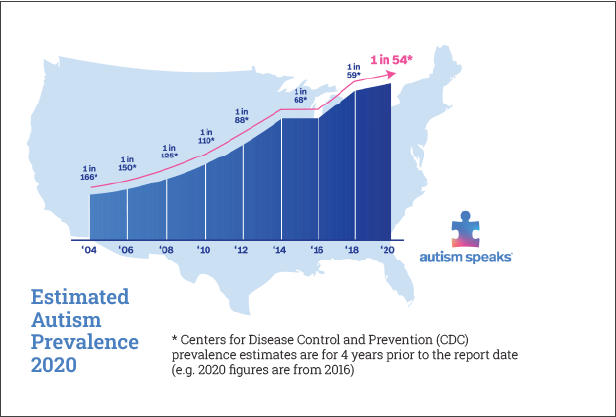
Figure 1 Global Autism Prevalence Estimation 2020
Many medical experts are trained today and can pick up the early signs of autism. In addition, with the help of Google and other search engines and dedicated websites, many parents also can pick up on their own about autism spectrum disorder. However, there is a range of clinical features or problems, and these symptoms vary from child to child. The exact diagnosis of ASD (Autism Spectrum Disorder) still remains challenging.
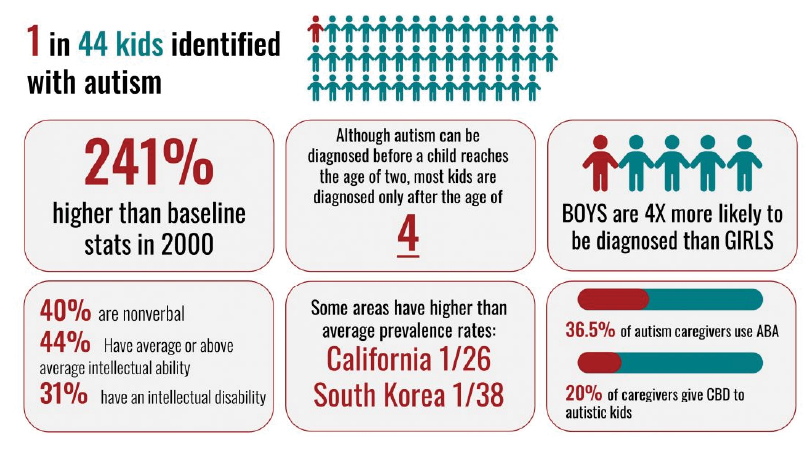
Figure 2: Autism Statistics
Spectrum of Disorders
As per the criteria set by The Diagnostic and Statistical Manual of Mental Disorders 4 (DSM 4), there’s a broad umbrella of disorders called Pervasive Developmental Disorders (PDD) (Fig. 3). PDD is divided further into three broad categories:
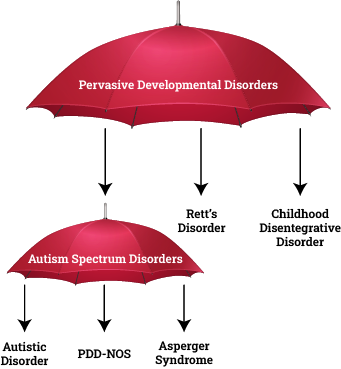
The term Autism Spectrum Disorder is used synonymously with the term autism. The recent DSM 5, clubs all of these under one umbrella of autism spectrum disorder.
Types of Disorders
- Autism spectrum disorder or ASD is further categorised as Classic autism, PDD-NOS (not otherwise specified) and Asperger’s Syndrome or high functioning autism. Savant syndrome is a condition where prodigious talent can co-occur with developmental conditions such as autism spectrum conditions (autism).
- Rett’s disorder is a genetic disorder where children may show many of these autistic features, but these features are part of the underlying genetic effect.
- Childhood Disintegrative Disorder which is very diverse and borders between neurology and psychiatric manifestation.
Autism Detection – Gold Standard DSM-5
The gold standard of Autism detection is DSM (Diagnostic and Statistical Manual of Mental Disorders) version 5.0. DSM -5 describes four criteria for ASD and the child must meet the criteria A, B, C and D.
- The first category is social communication. For example, there is a lack of social reciprocity. E.g., when you smile at the child, she/he may not spontaneously smile back. The word autism comes from a Greek word called ‘Autos’ meaning the child is in his own world and is not interacting or is not engaging with anybody around.
- The next criteria are repetitive behaviour or stereotypic behaviours. E.g., switching on and off lights repeatedly or a need for things to be kept in a specific place etc.
- The third one is if any of these symptoms are present from early childhood.
- Fourth criteria could be a combination of these symptoms limiting everyday functioning.
DSM-5 Criteria for Autism Spectrum Disorder
Currently, or by history, must meet Criteria 1, 2, 3 and 4.
- Persistent deficits in social communication and social interaction across contexts, not accounted for by general developmental delays, and manifest by all 3 of the following:
- Deficits in social-emotional reciprocity
- Deficits in non-verbal communication behaviour used for social interaction
- Deficits in developing and maintaining relationships
- Restricted, repetitive patterns of behaviour, interests or activities as manifested by at least two of the following:
- Stereotyped or repetitive speech, motor movements, or use of objects.
- Excessive adherence to routines, ritualized patterns of verbal or nonverbal behaviour or excessive resistance to change
- Highly restricted, fixated interests that are abnormal in intensity or focus.
- Hyper-or-hypo-reactivity to sensory input or unusual interest in sensory aspects of the environment.
- Symptoms must be present in early childhood (but may not become fully manifest until social demands exceed limited capacities.
- Symptoms together limit and impair everyday functioning.
Most of these symptoms or a combination of them are present in almost all of us! People who are extremely extroverts or introverts sound to border a few of these characteristics. But when these symptoms impair daily interactions, it may fit into the criteria of ASD
ASD – Diagnostic Tools
Early diagnostics are still very subjective since parents might be denying the symptoms in most cases. However, there are many screening tools which provide an objective evaluation based on the DSM-5 criteria. Most of the tools might have high sensitivity but low specificity meaning those who do not clearly show autistic tendencies may undergo diagnostic evaluation. Hence these screening tests might result in many false positives.
Below are a set of tools which are commonly used.
- M-CHAT R – suitable for 15-30 months olds
- TABC – Trivandrum Autism Behaviour Checklist
- STAT – Screening Tool for Autism in Toddlers and Young Children aged 2-3yrs
For Diagnosis, the following tools are available.
- ADOS-2 – Autism Diagnostic Observation Schedule – >12months
- INDT ASD – AIIMS modified Inclen ASD for children aged 2-9yrs
- ISAA – Indian Scale for Assessment of Autism, aged 3-9yrs
- CARS 2 – Childhood Autism Rating Scale, aged 2-9yrs
Diagnosis of Autism with Artificial Intelligence
Learning Analytics for specially-abled
Movies like Rain Man (1988), and Mercury Rising (1998) portrayed autistic savants as the mad genius who cannot exhibit emotions or do not respond well to others’ emotions. The current studies show that 37% of Autistic – Savant Syndrome co-occur, making them extremely bright in most cases.
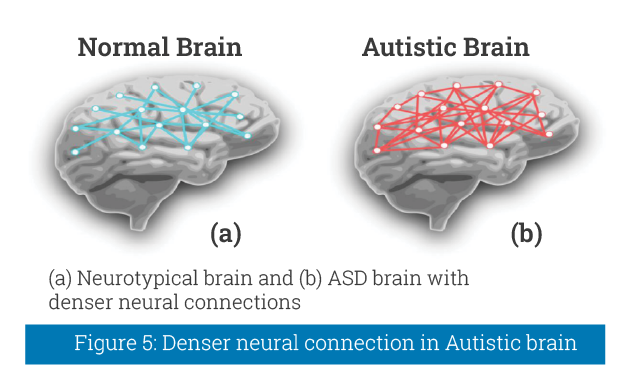
Figure 5: Denser neural connection in Autistic brain
One of the medical studies shows that the autistic brain[i] has more neuronal connections than the normal brain. That may be the reason for them being more visual learners and being very sensitive to stimuli. The question here is, can AI build applications to help autistic people to learn better? Can audio and video modelling with AI bring better learning skills, improve their motor skills or better their interpersonal relationship? It is also critical to bring a conducive ecosystem of doctors and parents into the picture. The focus of RACE researchers is to build a co-occurrence of medical, technical, and parental support systems
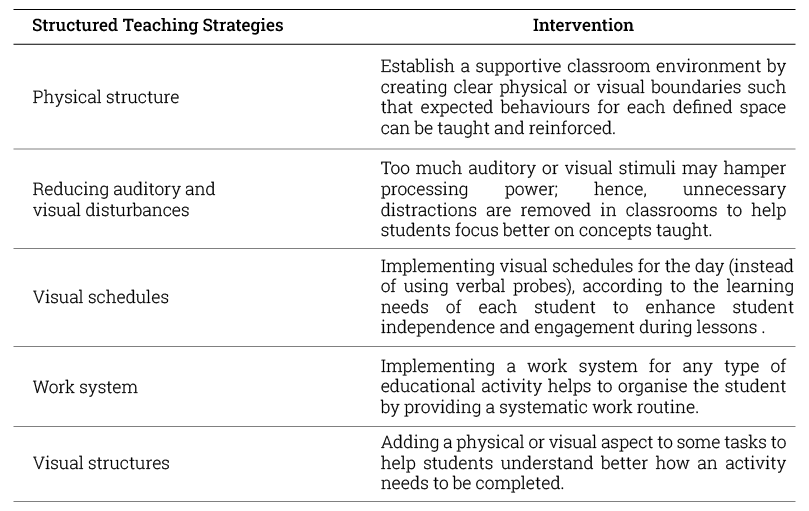
Figure 6: Learning Challenges and Intervention
Fig. 6. shows various learning interventions and strategies which can be adopted. One of the challenges in learning is their rigid physical structure. AI can come in handy here by detecting and estimating the right poses, and what sequence or condition makes them unstable. One suggestion would be to focus on their gross motor skills than finer motor skills. Audio and video analytics-based models can help detect distractive stimuli and help to avoid them, Reduce the options so that they can focus better. Creating more visual schedules and work systems are suggested to improve their learning. Today robots and wearable devices have brought better solutions to make their life easier.
AI applications for Autism Detection
With the proliferation of ML and AI-based diagnostic tools available for early detection, one may pick the right screening tools powered by AI. Behavioural symptoms can be measured through various assessment tools, and these data can be used to mark the probability of ASD. However, this diagnosis might not be 100 per cent correct since ASD is a spectrum disorder and not an absolute measurement.
AI experts must collect and analyse real-time video and audio data on how doctor-child and/or parent-child interactions. Watching the children in their natural setting can lead to better diagnosis. The AI researchers may also aim to develop an application which can help early diagnosis so that better treatment can be planned. Early intervention can result in better treatment helping the children to lead independent lives, and not become a burden for their family members. Tech entrepreneur Elon Musk has revealed recently that he has Asperger’s syndrome as per the report here. Many personalities who are in the spectrum, but high functioning have contributed enormously to society. Early detection and intervention with technologies like AI can help autistic people to become true contributors to society.
MRI images can be used to detect autism at an early age. Recent research from Stanford University says autism can be diagnosed as early as when the child is in the mother’s womb itself. Another set of research claims that autistic kids learn well and perform better when they’re trained by robots because robots exhibit more patience than humans. Sometimes, even the kid’s own parents might lose patience if she/he must repeatedly teach something 30 or 40 times, but a robot repeating certain actions more than 100 times is perfectly okay. There are robots like Milo which are popular in the US market but may cost around five thousand dollars. But for the Indian market we may need to build more cost-effective robots.
RACE’s FuzzyFRIL (Fuzzy Federated Reinforcement Learning) Models
A non-intrusive, observational, or passive data collection, a fuzzy cognitive model and continuous field testing etc are important when you deal with building appropriate AI models for autistic kids. RACE FuzzyFRIL model is a novel approach in that direction. In this system, passive or observational data from video and audio are captured with the real-time movement of the child in the real setting. On movement from these data, one can build the features which include, emotions, movements, etc through deep learning and other similar models. in Fuzzy systems, the domain models can be subjective models. Under Federated learning, the task is to collect data from multiple agents, like doctors, caretakers, and parents. Fuzzy Cognitive Systems (FCM) – are models built with complex systems which are explainable, Computing with Words (CWW) are hybrid systems where one can learn from data, incorporating domain knowledge. Reinforcement Model – reward and punishment models can be very effective in autistic training. The final model is a hybrid one merging multiple models as shown in Fig. 7.
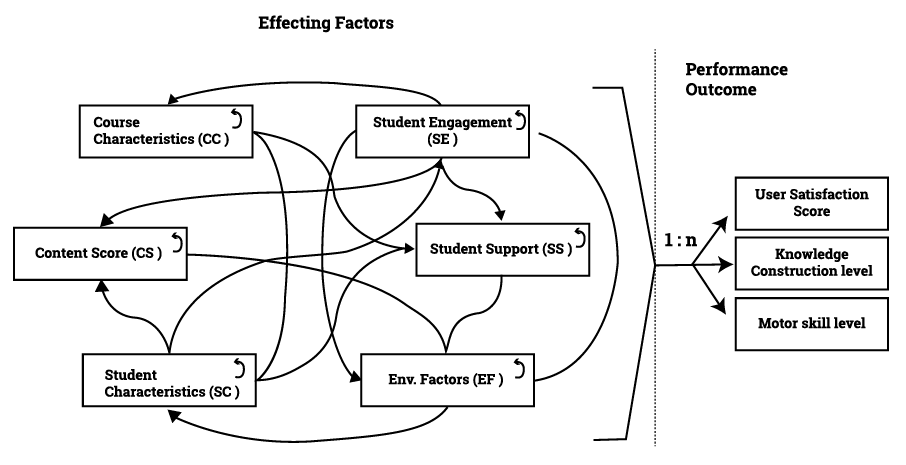
Figure 7: A High-Level FuzzyFRIL Model
Below are a sample set of features which goes into the FuzzyFRIL models
| Enjoy being swung | Take an interest in other children | Climbing on things | Enjoy playing | Pretend as other things |
| Pointing index fingers | Playing with small toys | Bringing objects to parents | Eye contact | Over sensitive voice |
| Smile in response to parents’ face | Responding to the name | Looking at a top when pointing | Walking | Looks at things |
| Unusual finger movements | Attract attention | Deafness | Stare at nothing | Look at the face to check the reaction |
Figure 8: Sample set of Features for Autism Detection
The way forward is to build an integrated model with customised recommendations with the FuzzyFRIL approach and contribute to the community. RACE welcomes contributors to this social cause and makes this world a more inclusive place to live in.
[1] Hughes, James E. A.; Ward, Jamie; Gruffydd, Elin; Baron-Cohen, Simon; Smith, Paula; Allison, Carrie; Simner, Julia (October 12, 2018). “Savant syndrome has a distinct psychological profile in autism”. Molecular Autism. 9 (1): 53.
[1] Barua, P.D.; Vicnesh, J.; Gururajan, R.; Oh, S.L.; Palmer, E.; Azizan, M.M.; Kadri, N.A.; Acharya, U.R. Artificial Intelligence Enabled Personalised Assistive Tools to Enhance Education of Children with Neurodevelopmental Disorders—A Review. Int. J. Environ. Res. Public Health 2022, 19, 1192.
[1] https://hai.stanford.edu/news/new-ai-driven-algorithm-can-detect-autism-brain-fingerprints
[1] https://www.youtube.com/watch?v=pgxWbldQVkE
[1] E. Puerto, J. Aguilar, C. López et al., Using Multilayer Fuzzy Cognitive Maps to diagnose Autism Spectrum Disorder, Applied Soft Computing Journal (2018)
[1] Mansouri, T., ZareRavasan, A, & Ashrafi, A. (2021). A learning fuzzy cognitive map (LFCM) approach to predict student performance. Journal of Information Technology Education: Research, 20, 221-243.




